Comprensión de las baterías 18650 en configuraciones de 48 V y 52 V
Las celdas de iones de litio 18650 se han convertido en la base de muchos sistemas de baterías gracias a su densidad energética, fiabilidad y flexibilidad. Ya sea que esté construyendo una bicicleta eléctrica, actualizando un sistema de almacenamiento solar o alimentando dispositivos electrónicos personalizados, es fundamental comprender cómo se configuran estas baterías. En particular, las configuraciones de 48 V y 52 V son comunes en aplicaciones de alto rendimiento. Esta guía explora cómo funcionan las baterías 18650 en estos formatos de voltaje, las ventajas de cada configuración y cómo elegir la opción adecuada para sus necesidades.
- Por qué son importantes los sistemas de baterías de 48 V y 52 V para los paquetes 18650
- Construcción de paquetes de baterías de 48 V y 52 V con celdas 18650
- Ventajas de los sistemas de 48 V y 52 V que utilizan celdas 18650
- Aplicaciones reales de los paquetes de baterías 18650 de 48 V y 52 V
- Seguridad y gestión de la batería en configuraciones de 48 V y 52 V
- Cómo elegir entre 48 V y 52 V para su proyecto
- Construir o comprar: qué debe saber
- Cómo mantener y maximizar la vida útil de la batería
- Tendencias futuras en la tecnología de baterías de litio de 48 V y 52 V
Por qué son importantes los sistemas de baterías de 48 V y 52 V para los paquetes 18650
A medida que las celdas 18650 se vuelven más comunes, conocer cómo se usan en configuraciones de 48 V y 52 V ayuda a los usuarios a optimizar el rendimiento y la eficiencia. Estos dos niveles de voltaje no son arbitrarios; cada uno cumple funciones distintas en la movilidad eléctrica, el almacenamiento de energía y la electrónica portátil. Un sistema de 48 V suele considerarse la base para bicicletas eléctricas y aplicaciones solares, mientras que las configuraciones de 52 V ofrecen potencia adicional para un rendimiento más exigente.
El papel del voltaje en los sistemas de baterías de iones de litio
El voltaje define la cantidad de potencial eléctrico que puede entregar un sistema de batería. En pocas palabras, un voltaje más alto permite que fluya más energía, lo que mejora la potencia de salida. Por eso es tan importante comprender cómo se construyen los sistemas de 48 V y 52 V con celdas 18650. La diferencia entre 48 V y 52 V puede parecer pequeña, pero en el uso real, afecta el par, la velocidad y la eficiencia.
¿Qué es una celda 18650?
Una celda 18650 es una batería cilíndrica de iones de litio de 18 mm de diámetro y 65 mm de longitud. Estas celdas suelen tener un voltaje nominal de 3,6 V o 3,7 V y una capacidad de entre 2000 mAh y 3500 mAh. Se utilizan ampliamente en baterías de portátiles, herramientas eléctricas, vehículos eléctricos y sistemas de almacenamiento de energía caseros gracias a su diseño compacto y alta densidad energética.
Construcción de paquetes de baterías de 48 V y 52 V con celdas 18650
El voltaje de una batería de iones de litio se determina por el número de celdas conectadas en serie. Cada celda 18650 aporta aproximadamente entre 3,6 y 3,7 voltios. Para construir baterías de 48 V y 52 V, se combinan varias celdas en configuraciones en serie y en paralelo.
Cómo funcionan las conexiones en serie y en paralelo
Serie (S) : Conectar las celdas en serie aumenta el voltaje. Por ejemplo, 13 celdas en serie (13S) = 13 x 3,7 V = 48,1 V.
Paralelo (P) : conectar celdas una al lado de la otra aumenta la capacidad (amperios-hora) mientras mantiene el mismo voltaje.
Entonces, un paquete 13S4P (13 en serie, 4 en paralelo) hecho con celdas de 3500 mAh ofrece:
Voltaje: 13 x 3,7 V = 48,1 V
Capacidad: 4 x 3,5 Ah = 14 Ah
Energía: 48,1 V x 14 Ah = 673,4 Wh
Para un sistema de 52 V, se utiliza una configuración 14S:
Voltaje: 14 x 3,7 V = 51,8 V
Energía (con el mismo 4P): 51,8 V x 14 Ah = 725,2 Wh
>>Vea también la Guía completa de baterías del grupo 42: especificaciones y usos sin mantenimiento
Comparación de diseños de paquetes de baterías de 48 V y 52 V
|
Parámetro |
Paquete de baterías de 48 V |
Paquete de batería de 52 V |
|
Celdas en serie (S) |
13 |
14 |
|
Voltaje nominal |
48,1 V |
51,8 V |
|
Voltaje pico |
~54,6 V (13 x 4,2 V) |
~58,8 V (14 x 4,2 V) |
|
Casos de uso |
Bicicletas eléctricas estándar, solares |
Bicicletas eléctricas de alto rendimiento |
Ventajas de los sistemas de 48 V y 52 V que utilizan celdas 18650
Beneficios de los sistemas de baterías de 48 V
Los paquetes de baterías de 48 V son ideales para usuarios que buscan un equilibrio entre potencia y compatibilidad. Ofrecen:
Amplia compatibilidad con muchos controladores y motores existentes
Menor costo y complejidad
Rendimiento eficiente para conductores ocasionales y configuraciones solares estándar
Beneficios de los sistemas de baterías de 52 V
Los paquetes de baterías de 52 V se prefieren en escenarios de alta demanda, que incluyen:
Aceleración más rápida y velocidades máximas más altas en bicicletas eléctricas
Mejor potencia de escalada
Alcance ligeramente mayor debido a una mayor eficiencia a alta potencia
Si bien los paquetes de 52 V cuestan más y requieren controladores compatibles, proporcionan un aumento notable en el rendimiento.
Aplicaciones reales de los paquetes de baterías 18650 de 48 V y 52 V
Bicicletas eléctricas y patinetes eléctricos
Las bicicletas eléctricas suelen usar sistemas de 48 V o 52 V. A continuación, se muestra una comparación:
Bicicletas eléctricas de 48 V : conducción suave y estable, ideal para desplazamientos diarios.
Bicicletas eléctricas de 52 V : mayor velocidad y par motor, mejor capacidad para subir pendientes
La elección entre 48 V y 52 V depende del estilo de conducción, el terreno y el rendimiento deseado. Los conductores que suelen afrontar cuestas o transportar cargas pesadas se benefician de los sistemas de 52 V.
Almacenamiento de energía solar
Los sistemas solares fuera de la red y los híbridos a menudo utilizan paquetes de 48 V porque:
Los inversores y los controladores de carga MPPT son ampliamente compatibles
Los bancos de baterías son más fáciles de gestionar y ampliar
Los sistemas de 52 V se pueden adaptar, pero pueden requerir configuraciones de carga personalizadas o equipos más avanzados.
Powerwalls y sistemas de respaldo para bricolaje
Los aficionados al bricolaje que construyen sistemas de almacenamiento de energía domésticos (Powerwalls) suelen optar por 48 V por su simplicidad y compatibilidad. Sin embargo, los paquetes de 52 V están ganando popularidad gracias a su mayor densidad energética y a su mejor gestión de cargas elevadas.
Seguridad y gestión de la batería en configuraciones de 48 V y 52 V
Por qué es fundamental un sistema de gestión de baterías (BMS)
Ya sea que utilice una configuración de 48 V o 52 V, un BMS robusto es esencial. Este sistema:
Equilibra los voltajes de las celdas
Previene la sobrecarga y la descarga excesiva.
Monitorea la temperatura y protege contra cortocircuitos.
Para un paquete 13S o 14S, asegúrese de que el BMS tenga la clasificación adecuada para que coincida con la cantidad de celdas de la serie y los requisitos actuales del sistema.
Gestión térmica y vivienda
Las baterías 18650 de alta capacidad generan calor, especialmente bajo carga. Una gestión térmica adecuada incluye:
Recintos metálicos o disipadores de calor
Refrigeración activa (ventiladores) para sistemas de alto rendimiento
Espaciamiento adecuado entre celdas y diseño del flujo de aire
Cómo elegir entre 48 V y 52 V para su proyecto
Cuándo elegir 48 V
Bicicletas eléctricas estándar para desplazamientos diarios o de paseo
Sistemas solares o de respaldo económicos
Compatibilidad de controlador más sencilla
Cuándo elegir 52 V
Conducción basada en el rendimiento (velocidad y par)
Terreno con cargas más pesadas o cuesta arriba
Sistemas ya equipados con controladores de alto voltaje
>>Vea también Comprensión de las baterías BCI del grupo U1 y U1R para aplicaciones industriales
Construir o comprar: qué debe saber
Paquetes de baterías de 48 V y 52 V para armar uno mismo
Muchos entusiastas construyen paquetes de baterías 18650 personalizados, pero esto requiere:
Soldador por puntos o herramientas de soldadura de alta calidad
Conocimiento de comparación y prueba de células
Selección de BMS y fusibles
Pruebe siempre las celdas usadas antes de reutilizarlas y asegúrese de que coincidan en voltaje y resistencia interna.
Comprar paquetes prediseñados
Muchas empresas ofrecen baterías prefabricadas de 48 V y 52 V con celdas 18650 de alta gama de marcas como Samsung, LG y Panasonic. Busca:
Clasificaciones de capacidad precisas
Integración de BMS de calidad
Opiniones de clientes y opciones de garantía
Cómo mantener y maximizar la vida útil de la batería
Prácticas de carga adecuadas
Para prolongar la vida útil de sus paquetes de baterías 18650 de 48 V y 52 V:
Utilice cargadores con cortes de voltaje correctos (54,6 V para 48 V, 58,8 V para 52 V)
Evite descargas completas: mantenga la carga entre el 20 % y el 80 % cuando sea posible
Conservar al 50% si no se utiliza durante periodos prolongados.
Monitoreo y pruebas regulares
Utilice herramientas como:
Comprobadores de celdas para equilibrio de voltaje
Probadores IR para detectar células débiles
Aplicaciones BMS inteligentes para el seguimiento del rendimiento
Tendencias futuras en la tecnología de baterías de litio de 48 V y 52 V
A medida que evoluciona la tecnología de iones de litio, se esperan mejoras en:
Densidad energética: Las futuras celdas 18650 y 21700 ofrecerán aún más vatios-hora
Inteligencia BMS: BMS más inteligente con Bluetooth, control de aplicaciones y algoritmos impulsados por IA
Seguridad: Mejores separadores y fórmulas de electrolitos reducen el riesgo
Comprender las baterías 18650 en configuraciones de 48 V y 52 V es fundamental para optimizar sus sistemas de energía, ya sea para una bicicleta eléctrica, una aplicación solar o un sistema de almacenamiento de energía casero. Las configuraciones de 48 V y 52 V ofrecen ventajas únicas, y elegir la correcta depende de sus necesidades específicas y la compatibilidad de sus equipos. Con un diseño, una gestión y un cuidado adecuados, ambos sistemas pueden ofrecer un rendimiento fiable y duradero.
En conclusión, a medida que crece la demanda de almacenamiento de energía eficiente y personalizable, el uso de baterías 18650 en configuraciones de 48 V y 52 V se volverá cada vez más común. Ya seas constructor, conductor o entusiasta de la energía, conocer las diferencias y ventajas de estos sistemas te permitirá tomar decisiones más inteligentes y aprovechar al máximo tu inversión en baterías.

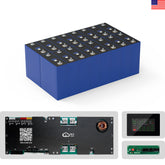

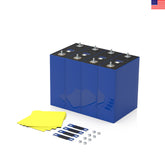

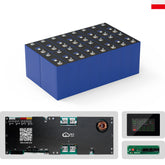

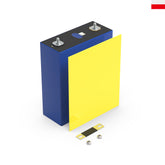

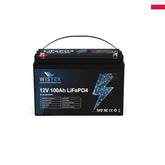
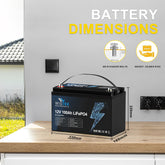
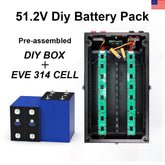

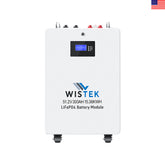
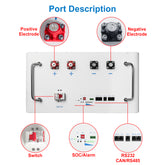
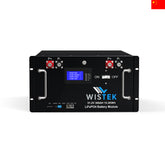
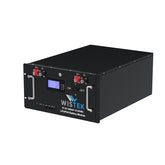


Leave a comment
All blog comments are checked prior to publishing